Challenges of Fitting a 12-year Old Workstation with New Ultra EPYC Parts
There are a few items that I wanted to point out. They are minor, but they are also something I wanted our readers to be aware of should they replicate this concept.
Sun Ultra 24 Motherboard Mounting Standoffs
In 2007, motherboards were a lot less packed than what we have today. As a result, the Sun design team utilized nine ATX motherboard standoffs. Eight of those were in the correct spot. One was, well, less so.
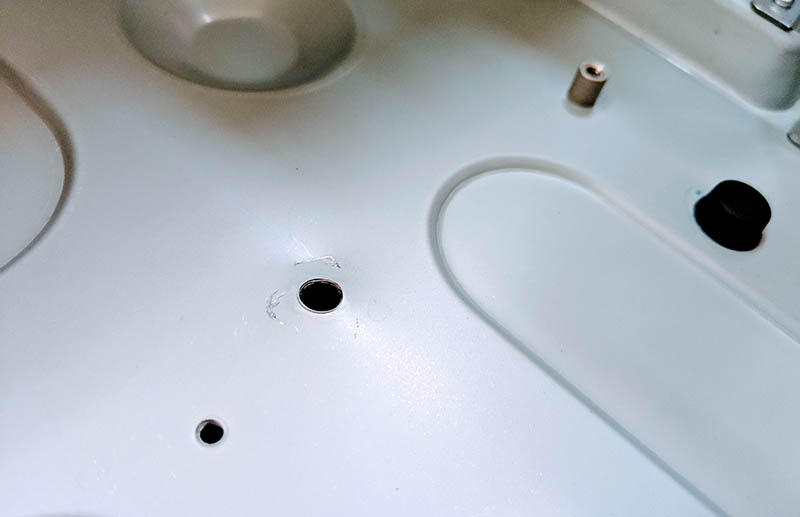
This works via a peg that is affixed through the sheet metal behind the motherboard and is fit into a ring. There is probably a better way to do this, however, during the discovery process I just snapped this out.
Gigabyte MZ01-CE0 USB 3.0 Front Panel Header
This was quite a challenge indeed. I had already put together the system, placed the motherboard, and then went to affix the USB 3.0 front panel header. Disaster struck.
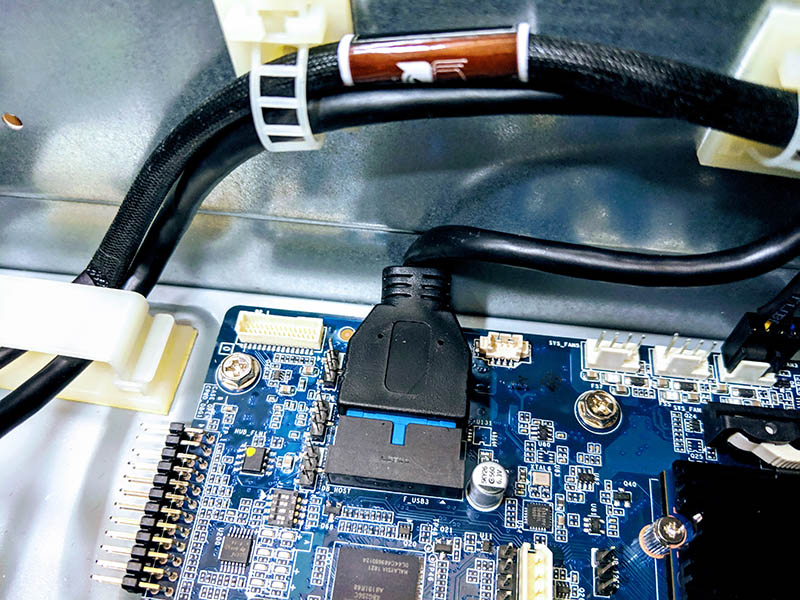
The actual connector for the Kingwin 5.25″ front panel USB 3.0 bay was longer than the motherboard. Most of the front panel headers are perpendicular to the motherboard but on the Gigabyte MZ01-CE0 it is parallel. Gigabyte had to make this design decision to ensure that longer GPUs could be used. The negative with using these two parts together is that it was a tight fit that required installing the USB 3.0 cable before installing the motherboard.
Noctua NH-U9 TR4-SP3 Orientation
The Noctua NH-U9 TR4-SP3 is one of the only air coolers that will fit this case without issue. A challenge is that the heatsink is uni-directional. It is set perpendicular to the socket path. On a workstation motherboard, this blows air from the front of the chassis to the rear of the chassis as one would want.
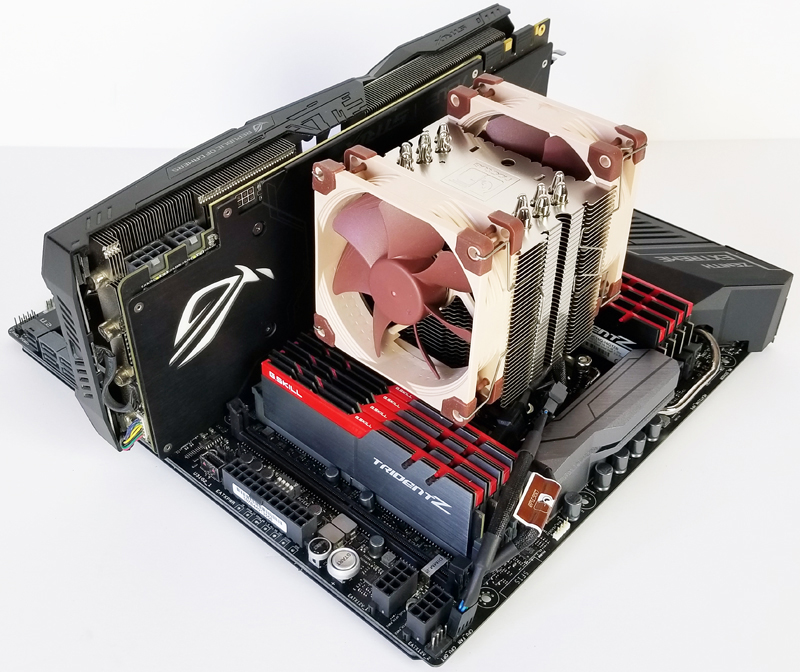
On a server motherboard, it vents air toward the top of the chassis, which is not what one wants.
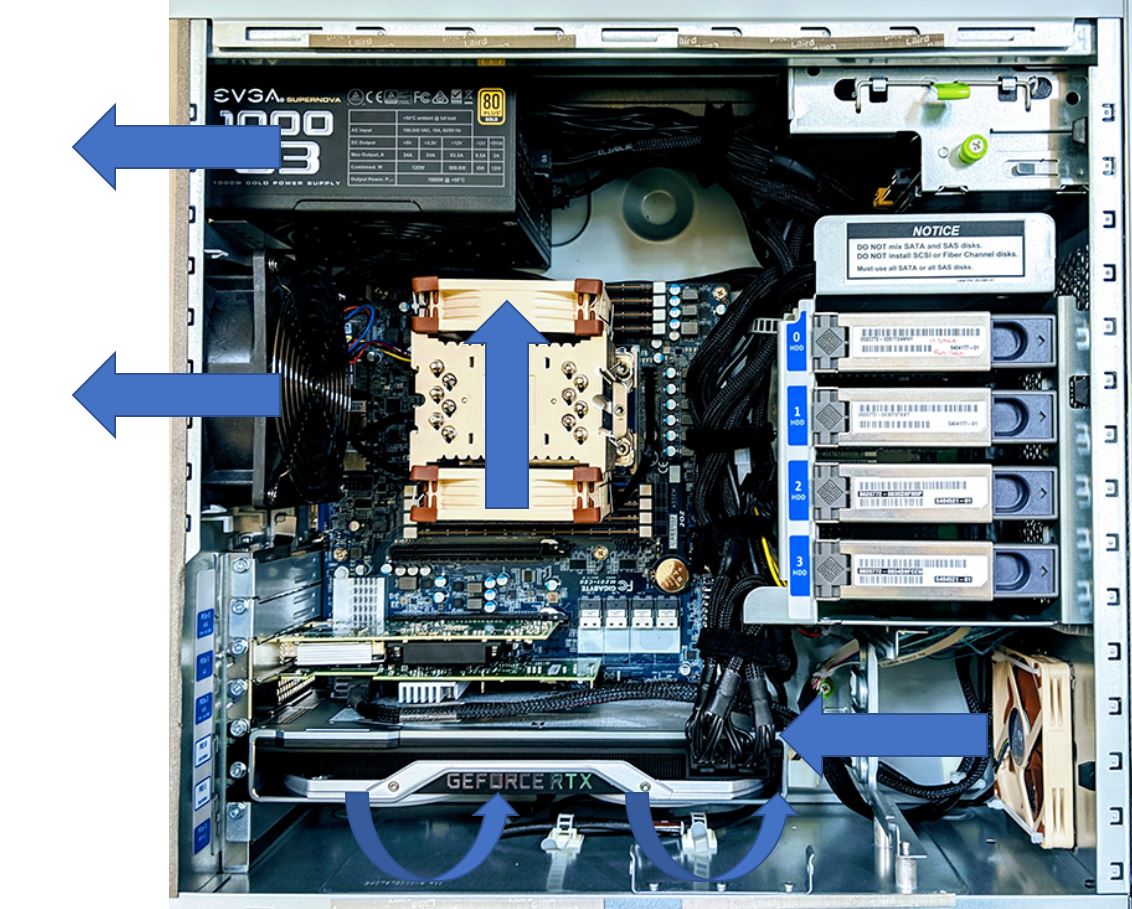
Frankly, this is one of those that I will have to fix with a baffle later or find a new heatsink. Adding some ducting may help, but it is not great at the moment. As you can see from the airflow diagram, cooling storage is also a concern here.
Storage and Cooling
I tried two different storage configurations. First, the one I wanted with 4x 3.2TB SAS3 SSDs that can yield up to 4GB/s in sequential read speeds. The Micron S630DC 3.2TB SAS3 drives are running a bit too hot for comfort in this configuration. There is no fan pushing air over the drives here, so there is simply not enough airflow in the 2007 era Sun Ultra 24 workstation.
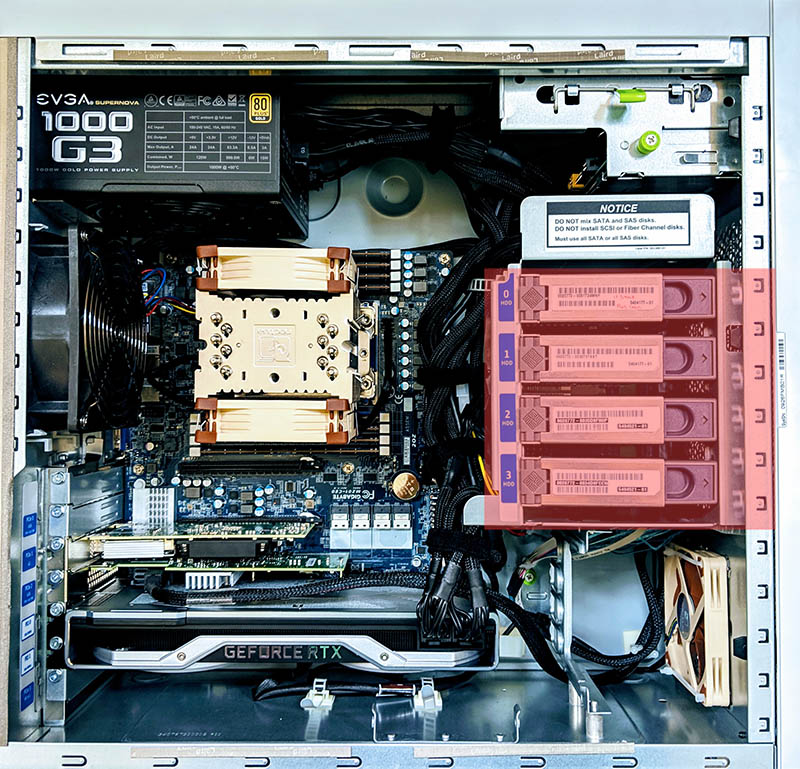
I may try adding a thin 120mm fan and trying again. Note, since the spacing between drives is very generous, using 10TB WD Red drives worked great. SATA III SSDs work great. The Micron SAS3 drives ran too hot and would not negotiate to 12.0gbps due to the PCB that was realistically designed for SAS1/ SATA II 3.0gbps speeds.
Power Supply Fit
The EVGA SuperNOVA 1000W G3 PSU has a nice Eco mode feature that keeps fans from spinning and making noise at low power levels. This is controlled by a small switch on the unit.
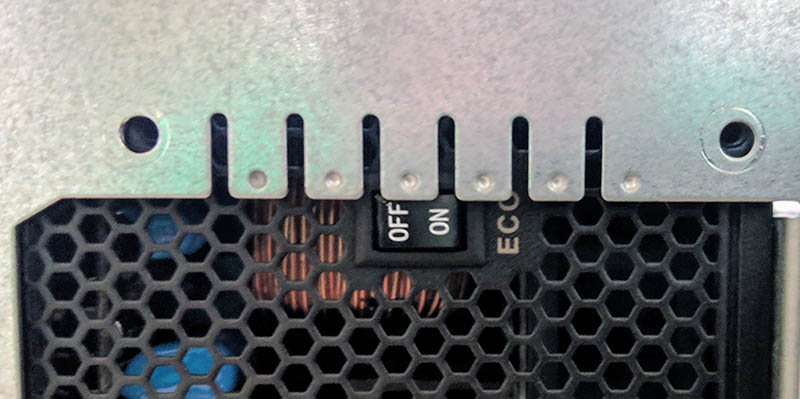
It just so happened that there are little power supply fingers that went in front of the original 530W unit. Simply bending two of these back with a wrench made this fit challenge disappear.
Final Words
Doing a build like this reminds me of a few things. It is amazing to see how forward-thinking the Sun Microsystems design was in 2007. The Ultra 24, save that black optical drive, looked great and had functionality on par with systems a decade newer.
Another key takeaway is that the consumer desktop space, especially the ATX space, seems extremely stagnant when you do a build like this. Everything fit a little too well. Instead of a few trips to Central Computers, everything just worked out of the box. That is stellar.
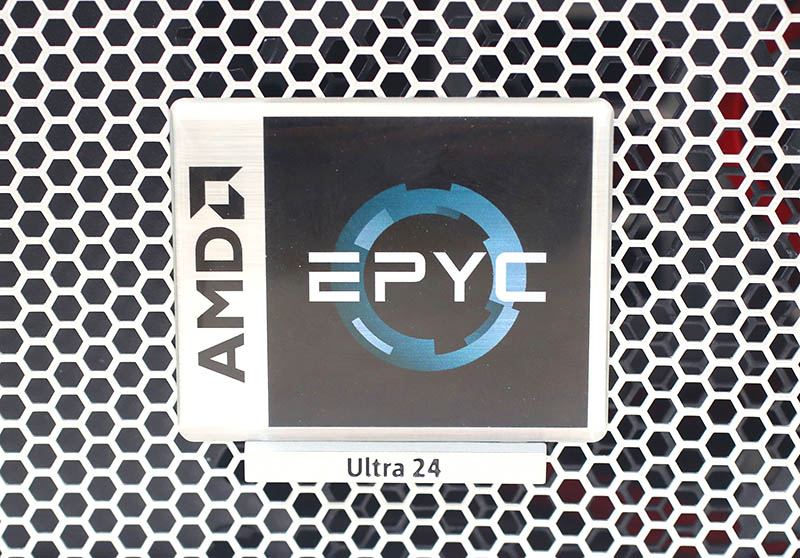
Here is the fun part for those looking to replicate this, the Sun Ultra 24 and Ultra 27 systems can be had for around $100. That is about the same cost as a reasonable ATX case these days. Cable management is not as good. On the other hand, it will just work. The payoff is something different than the translucent panels and RGB gaming systems. One gets a cutting edge workstation emblazoned with a giant Sun Microsystems logo.



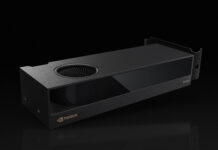
This article was so well done. It was cool to get a history lesson as well.
Hey you missed that the case has thumb screws 10 years ago.
We ran datacenters full of Sun gear. They were arrogant but they also made so much technology we still use today.
Thanks for the article. I enjoy these restomod builds. I personally fit modern running gear into old SGI chassis. I currently run a Threadripper in an SGI Fuel chassis and have an Octane ready to go an ITX build with Ryzen 3000 when it is released.
I’m impressed with how accessibel this is. Bend one part. break something else and you’re using EPYC in this old case. It looks like your power button isn’t working either but you’ve got IPMI so you can reboot from your phone if needed.
A $1550 CPU with 8ch ECC RAM?
100Gb, 10Gb, 1Gb NICs?
12.8TB SAS array and Optane?
This is a Sun server not a workstation.
Great PSU tips on p5
It’s not a server, because it does not have dual-psu and rack-case 🙂
please do a build video if not already done 🙂
awesome work.. btw 😀
The beauty mark comment was spot on. You’re showing why Sun was in decline and about to be sold to Oracle.
Ultra 24? You should have used epyc 7451 to match the number 24 with cores 😉
What’s next, Patrick, a red sports car?
I’m not gonna lie. STH is usually like the authoritative encyclopedia of content and this is totally not.
But you’ve 100% nailed your demographic with this build. No RGB lights and a Sun logo. I can’t remember the last time I’ve read more than 2 or 3 pages on an article STH or other but I couldn’t wait to see more word for word.
I just did a search for other Ultra 24 builds and there aren’t many. Maybe you’ve started something? I’m not going to cut sheet metal for a build, but bending a few bits I’ll do. I can’t wait until my interns this summer see a Sun box under my desk at work.
That AMD easter egg was a 1 in a million find too as others pointed out.
“Sun Ultra workstation families that are powered by the latest multi-core AMD… processors, and run virtually any OS”
Fixed with EPYC by STH Mr. Fowler. #IRememberSun
I love the thought process. You’re using IT SAS like SUN would with ZFS – no SAS RAID for that.
Most people that do these are either gaming people or gaming people doing servers. It’s fun to see something that’s thoroughly modern with a nod to the past.
That’s a mean pedestal workgroup file, VM and deep learning server too.
Really nice, I worked on Sun workstations for many years and have found memories of Sun and Solaris. Solaris was unbreakable Unix, too bad Oracle abandoned it.
Changing gears, man, if you really NEED such hardware in your workstation you must be doing some awesome stuff – and doing it all at the same time.
Nice – I’d pop the black faceplate off and get rid of the white writing. Every port is USB3.0 so why label it? The white writing is a bit of a distraction, but then again I like discreet things.
Having sentimental memories of a 1990 Sun Sparc Workstation that we used to get orbital parameters, if I recall correctly Byte Magazine at the time reviewing the 20MHz RISC based CPU making note of how a spark is the last thing a user would want associated with their computer, thus odd naming selection, am happy if not excited to see this effort to revive a mint condition, classic upright Sun workstation case with new innards.
Actually, Oracle still supports Solaris and releases new versions every now and then even though there are not as many engineers working on it anymore.
Vlad, Solaris has been abandoned. No roadmap, just minor fixes.
Well done! Would love to see a rebuild of a Sun Ultra 40 (M2)! The old AMD version before the Intel switch and the “beauty mark” but very different hardware layout (custom psu).
I love the Sun workstation enclosures. If only someone would make generic enclosures that looked like that.
Does anyone know if an EATX board would fit?
I’ve been lurking at this site for a while now, and I really do appreciate the writing. There is one point of criticism though that if you would correct would be appreciated especially when one is doing a build. That item would be the cost breakdown of the build.
did you put solaris on it?
where are you finding these machines for 100? 395 is the cheapest on eBay, please let me know where i can pick a few up for a cool Benjamin!!!!!!
Hello:
Great job! Very neat.
I also have a U24, got it three years ago but for ~$300.
It’s really great hardware, even by 2019 standards.
I was wondering: could you tell me what BIOS version your “barn find’s” motherboard came with? =-)
Thanks in advance,
JHM
I just finished the same swap on my Sun Ultra 20. I had to slightly file the holes for the PSU because of a slight misalignment, about 1/16″. Otherwise, it just dropped in. I’ll be replacing the IDE DVD Reader with a SATA DVD RW
The Sun Ultra needs an upgrade to 2 x AMD EPYC 7742 😀
1) Can you put a fan BEHIND the drive cage or is there metal that comes down which would render that idea useless?
2) I’m surprised that your 100 Gbps Mellanox cards are only single port and not the dual port variant, especially given the fact that they’re PCIe 3.0 x16/x16 cards being inserted into a PCIe 4.0 x16/x16 slot.
Either way, pretty neat though. It’s a nice looking box. Oracle should totally bring these back.
Got my hands on a 24 Ultra through ewaste today. While the reason for why somebody would dispose of such a beautiful piece of work is beyond me, especially with ebay listings for it going wild, I really am not complaining.
There are some problems ahead, but I am absolutely stoked to bring life back into this machine. Today was an awesome day lol.